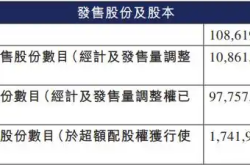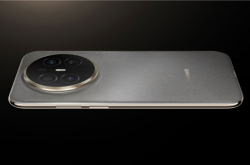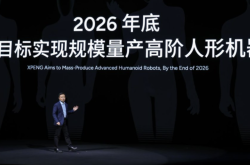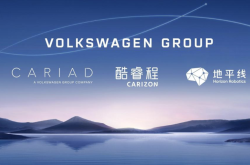Multinational Automakers: Countering China's New Forces with 'Transitional Technology'
![]() 06/27 2025
06/27 2025
![]() 684
684
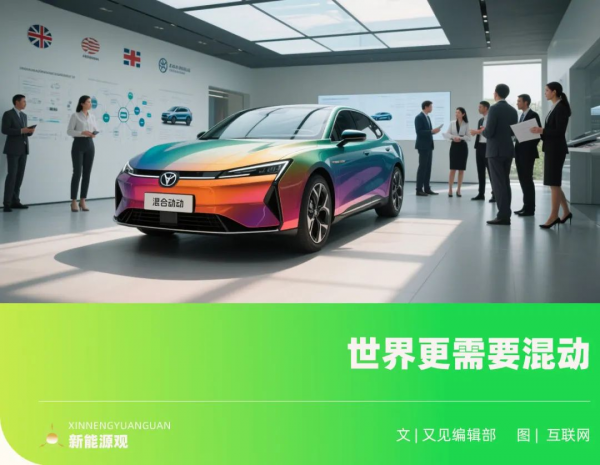
Original by New Energy View (ID: xinnengyuanqianzhan)
Full text: 3016 words, Reading time: 11 minutes
Multinational automakers are increasingly reaping the benefits of hybrid technology.
Lexus RX 350h topped the North American luxury SUV list with its ultra-low fuel consumption of 5.38L.
Despite a 4% decline in sales in 2024, Mercedes-Benz's plug-in hybrid models saw a year-on-year sales increase of 13%. Recently, rumors circulated that they would focus on large-battery hybrid vehicles.
BMW unveiled its technology roadmap featuring a three-pronged approach of 'internal combustion engine - hybrid - pure electric' at the 2025 Shanghai Auto Show, garnering significant attention. Now, they are planning to revive their extended-range technology.
Audi's CEO bluntly stated in an internal meeting, 'We have seriously underestimated the strategic value of plug-in hybrids!'
The resurgence of hybrids is no coincidence. Multinational automakers are embracing hybrids wholeheartedly. Behind this dramatic shift lies a technological counterattack for survival. Giants that once viewed Chinese technology as a 'follower' are now using Chinese hybrid solutions to counterattack the Chinese market.
In China, where the density of charging stations ranks first globally, hybrid sales have surged. In Europe, with only 50,000 public fast-charging stations, hybrids have long been the backbone of luxury car sales. The capital market is voting with real money: Tesla, a staunch believer in pure electric vehicles, saw its share price plummet by 37% within the year, while Toyota regained its top position among global automakers in terms of market value due to the popularity of its hybrid models.
While the pure electric camp is still debating range anxiety and spontaneous combustion risks, technological advancements have transformed hybrids – this desperate counterattack launched by traditional giants is quietly rewriting the rules of the new energy war.
1. The Turnaround of Giants: From 'Bottom of the Contempt Chain' to 'Lifesaver'
In June 2025, Audi's new CEO, Gernot Dörner, shook the industry with a statement: the plan to phase out fuel vehicles by 2033 set by his predecessor was overturned, replaced with 'maintaining parallel development of fuel and hybrid vehicles over the next decade.'
This is not an isolated case.
Mercedes-Benz quietly extended the lifecycle of its A-Class fuel vehicles to 2026 and reintroduced the 'Big V8' on its top-of-the-line AMG models. Volvo withdrew its commitment to 'full electrification by 2030'. Porsche even extended the sales cycle of the Cayenne fuel version beyond 2030.
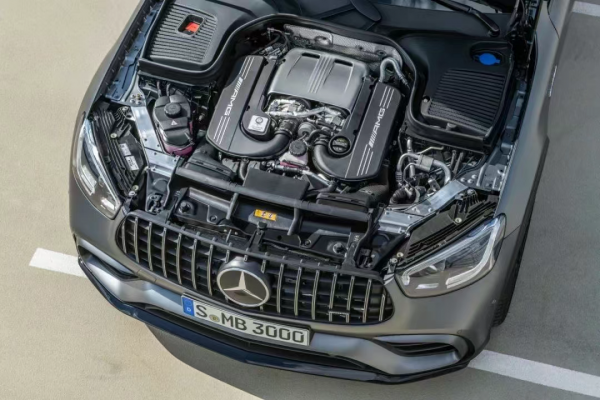
Image/Mercedes-Benz AMG reintroduces 'Big V8'
Source/Screenshot from the internet and New Energy View
These giants, once ardent proponents of electrification, have collectively turned to embrace hybrids. The market has woken idealists up with a harsh reality – Audi Q3 fuel version sales plummeted by 27% in the first half of 2024, but the plug-in hybrid version saw a contrary increase of 18% during the same period; Lexus dominated the North American market with its hybrid models, and the RX 350h topped the luxury SUV sales chart for three consecutive months with a fuel consumption of 5.38L and a power output of 457 horsepower.
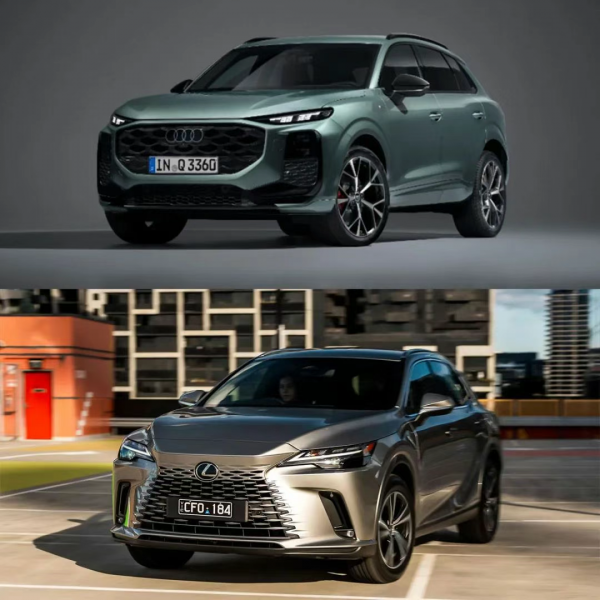
Image/Audi Q3 plug-in hybrid version – Lexus RX 350h
Source/Screenshot from the internet and New Energy View
Behind the market data lies the real choices of consumers: when pure electric vehicles dissuade users due to range anxiety and charging issues, hybrids become the optimal solution for those who want both environmental protection and freedom.
Even more dramatic is the reversal of technological paths. Mercedes-Benz directly adopted the AI hybrid system of Chinese brands for its new-generation CLA plug-in hybrid version, while BMW X3 plug-in hybrid continues to use Toyota's THS architecture. These giants, once dismissive of Chinese technology, are now using Chinese hybrid systems to counterattack the Chinese market.

Image/Mercedes-Benz CLA plug-in hybrid version – BMW X3 plug-in hybrid version
Source/Screenshot from the internet and New Energy View
The underlying logic is 'learning from China's strengths to compete with China' – utilizing China's mature hybrid solutions to counter China's new forces' pure electric offensive. Audi engineers have privately admitted that developing their own pure electric platform burned through 2.1 billion euros but only accounted for 15% of sales, while the Chinese version of the hybrid system exceeded 100,000 installations in just three months.
Behind this turnaround lies a painful lesson. The Volkswagen Group lost 2.1 billion euros in its electric vehicle business in 2024, while fuel vehicles contributed 65% of its profits. As the capital market loses patience with the 'pure electric story', hybrids have become a lifesaver for balancing short-term profitability and long-term transformation.
As Honda acknowledged when revising its strategy, 'If total sales remain at 3.6 million vehicles by 2030, we must ensure that 2.2 million of them are hybrids.'
2. The Popularity of Hybrids: The Optimal Solution Amidst Global Charging Infrastructure Shortage
Why are multinational automakers placing heavy bets on hybrids? In a nutshell, it's because fuel vehicles are falling out of favor, and pure electric vehicles suffer from range anxiety.
China boasts 60% of the world's charging stations, with over 10 million and a density that ranks first globally. However, in 2024, hybrid vehicle sales surged by 85% against the trend, accounting for 42.2% of total new energy vehicle sales. In Europe, there are only 50,000 public fast-charging stations, and in the central states of the United States, there is only one charging station every 200 kilometers on average.
Selling pure electric vehicles despite the insufficient charging infrastructure creates a disconnect between infrastructure and consumer choices, similar to forcibly promoting down jackets on Hainan Island: it's not that the product is poor, but that the scenario is mismatched.
As a result, North American consumers told Audi, 'We want electrification, but not pure electric.' Ultimately, Audi compromised: 10 plug-in hybrid vehicles will be launched in 2025, covering the entire lineup from A3 to Q7. Japan is even more thorough, with hybrids accounting for up to 90% of sales. Toyota engineers even boldly stated, 'Pure electric? That's just an elective course for hybrids!'
This choice is backed by harsh real-world considerations: although the European Union has passed the 'ban on the sale of fuel vehicles by 2035' bill, it makes an exception for hybrids; the Trump administration directly revoked Biden's electric vehicle mandate, opening a policy gap for hybrids.
Looking further at the rapid advancement of new energy vehicles globally, such scenarios are becoming increasingly common: while pure electric vehicle owners are engaged in heated debates over charging stations at highway service areas, hybrid vehicle owners have already filled up their tanks and sped away.
Geely Yinhe L6 EM-i relies on its 3L fuel consumption in depleted battery mode to outperform its fuel vehicle counterparts with 8L fuel consumption in the same class. Owners joke that 'after a tank of fuel, there are still two bars left after running a round trip from Beijing to Shanghai'; the Li Auto L9 has a pure electric range of 215 kilometers, covering 90% of urban commuting scenarios, and can be refueled for long-distance travel, instantly transforming into a 'perpetual motion machine.'
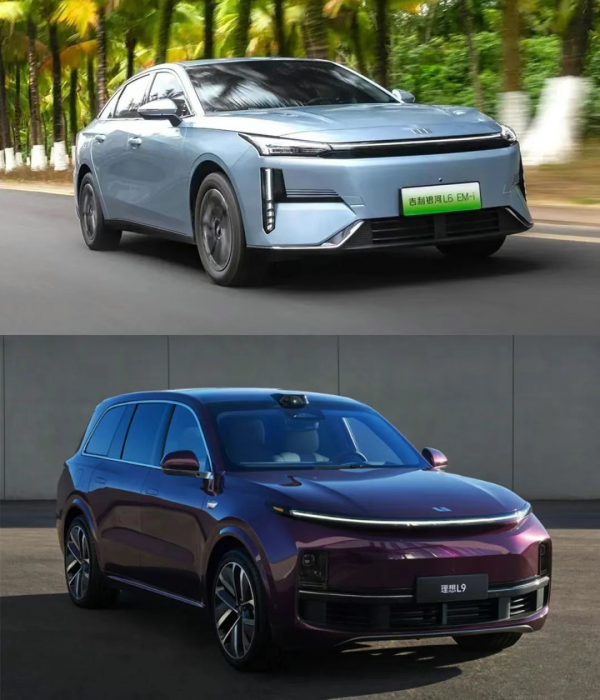
Image/Geely Yinhe L6 EM-i and Li Ideal L9
Source/Screenshot from the internet and New Energy View
With fuel consumption in depleted battery mode outperforming fuel vehicles and pure electric range covering daily scenarios, hybrids' overwhelming advantages lie in the details of everyday vehicle use.
Rapid technological advancements are transforming hybrids from 'compromise solutions' into 'all-rounders.'
Toyota reduces costs through 'diversified hybrid combinations + localized production.' For example, the C-HR plug-in hybrid version has seen a sales surge of 256% due to its advantages such as a pure electric range of 66 kilometers under WLTP (World Light Vehicle Test Procedure) conditions and a fuel consumption of 5L per 100 kilometers in hybrid mode, confirming European consumers' preference for technologies that eliminate range anxiety.
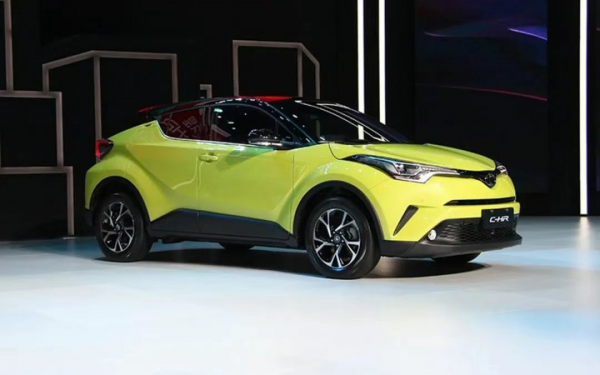 Image/Toyota C-HR plug-in hybrid version
Image/Toyota C-HR plug-in hybrid version
Source/Screenshot from the internet and New Energy View
BMW also performs well in hybrid technology. The 2025 BMW X1 plug-in hybrid model has undergone technological upgrades, equipped with a 24kWh battery pack that increases its NEDC (New European Driving Cycle) pure electric range to 110km. This vehicle has three driving modes: AUTO mode defaults to pure electric priority, MAX mode maximizes pure electric range, and SAVE mode forces the engine to work to charge the battery.
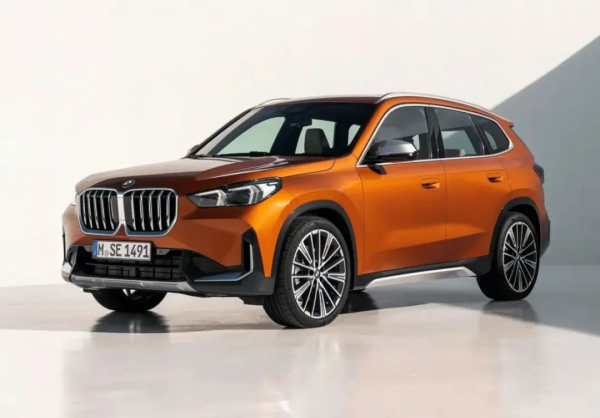
Image/BMW X1 plug-in hybrid version
Source/Screenshot from the internet and New Energy View
Of course, Audi, Mercedes-Benz, Jeep, Mitsubishi, and others also have differentiated hybrid layouts, competing for global market share.
3. Pain Point Elimination: 'Specific Remedies' for Hybrid Drawbacks
However, hybrids carry the 'original sin' of 'short-lived batteries', causing commuting troubles for global consumers.
That is, they suffer from pain points such as short range, slow refueling, and severe battery degradation. Due to their small battery capacity (usually only 15-20kWh), hybrid vehicle owners need to charge their vehicles every day, or even multiple times a day. Frequent charging and discharging can lead to a 30% degradation in just two years, compared to an average of only 15% for pure electric vehicles.
The experience of Beijing car owner Wang Chao (pseudonym) is representative: his domestically produced extended-range hybrid has been in use for more than five years, and the battery has degraded to the point where it needs to be replaced. When he called the 4S shop, he was told that replacing the battery would cost 120,000 yuan, 'more expensive than half a car!'
The 4S shop directly transferred him from 'after-sales' to 'pre-sales': 'You might as well buy a new car. It's more cost-effective than replacing the battery. Plus, there are many subsidies available for buying a new car now…' This left Wang Chao speechless.
Nowadays, these pain points of short range, slow refueling, and severe battery degradation are being precisely addressed by technological 'specific remedies.' Ningde Times, which ranks first in the global market share of power batteries, has launched the Xiao Yao Super Hybrid Battery with a pure electric range of over 400KM and 4C supercharging, providing a prescription for the 'ailments' of hybrid batteries.
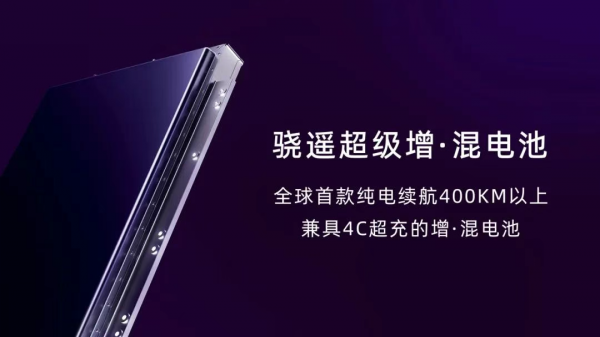
Image/Xiao Yao Super Hybrid Battery
Source/Screenshot from the internet and New Energy View
The first remedy is called 'Long Pure Electric Range for Fuel Efficiency,' specifically targeting short range. Hybrid technology was theoretically born to address range anxiety in situations of long-distance driving or inconvenient charging facilities. However, its battery design is limited by the dual-power architecture, resulting in a relatively short pure electric range, and users still need to charge frequently, which becomes its main shortcoming.
Through innovative material technology and design, Xiao Yao batteries achieve a pure electric range of 400 kilometers, making hybrids' performance in pure electric mode closer to that of pure electric vehicles. With this advantage, users no longer rely on the assistance of range extenders for daily commutes, significantly enhancing the user experience.
The second remedy is called 'Low-Temperature Resistance,' specifically targeting battery degradation. It adopts a hybrid integration of sodium-ion batteries and lithium-ion batteries (AB battery system). Sodium-ion batteries exhibit less performance degradation in low-temperature environments, significantly improving overall range stability. The full-temperature range battery management system can accurately predict battery consumption in high and low-temperature environments, avoiding power performance degradation due to temperature changes, enabling discharging in extreme cold environments of minus 40°C, charging at minus 30°C, and driving experience at minus 20°C indistinguishable from normal temperature.
The third remedy is the most revolutionary 'Refueling-Style Charging' experience, specifically targeting slow refueling. Slow charging speed has always been a pain point affecting the user experience of plug-in hybrids. Xiao Yao batteries support 4C supercharging, allowing a quick charge from 20% to 80% in just 17 minutes, adding 200 kilometers of range. This means that while you enjoy a cup of coffee, the vehicle is almost 'fully revived.'
Three remedies, triple effects, leaving almost no worries about hybrids. Multinational automakers are now like tigers with wings, bursting with combat effectiveness. Of course, domestic new energy vehicles have a near-water advantage, with models like AVATR 06 and LYNK & CO 900 already equipped with such dedicated hybrid batteries, participating in the fierce competition in the new energy vehicle market.
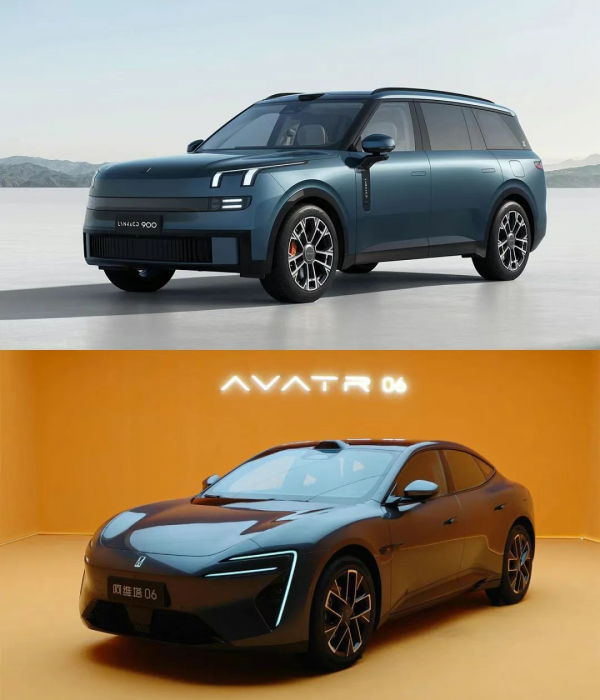
Image/AVATR 06 – LYNK & CO 900
Source/Screenshot from the internet and New Energy View
Looking back, the quintessential value of hybrid vehicles resides in their role as a pivotal stepping stone in this era – as multinational titans heavily invest in them, the essence of hybrids has undergone a transformation. The concept of 'Refueling-Style Electrification' effectively bridges the gap between the ideal and the real, potentially not the ultimate destination of the energy revolution, but undoubtedly the most optimal path to navigate through the current era of charging infrastructure scarcity. It has ceased to be viewed as a mere transitional measure, but rather the superior solution amidst the global shortage of charging stations and the technological bottleneck period.
In this competitive landscape, Chinese technology has emerged as a formidable counterattack weapon for these giants, while also hinting at an intriguing question: who is truly 'learning from the strengths of others'? The answer to this lies deeply embedded in the automotive industry's relentless pursuit of breakthroughs in new energy battery technology.

